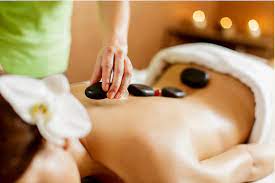Massage, often viewed as a luxury indulgence, is much more than a soothing escape. It’s an ancient practice rooted in the intricate understanding of the human body, offering a blend of art and science that promotes holistic well-being. From the subtle touch of a Swedish 하노이 에코걸 to the deep pressure of a sports massage, this therapeutic practice has evolved over centuries, becoming an essential part of modern wellness regimes.
A Journey Through History
The origins of massage can be traced back over 5,000 years to ancient civilizations like China, Egypt, and India. In China, massage was a key component of Traditional Chinese Medicine (TCM), where practitioners used touch to balance the body’s energy, or “Qi.” In Egypt, ancient tomb paintings depict massage as a form of healing, while in India, it was integrated into Ayurvedic medicine, where massage was used to maintain harmony between mind, body, and spirit.
These early practices laid the groundwork for the diverse range of massage techniques we see today. Each culture developed its own unique methods, from the acupressure-based Shiatsu in Japan to the oil-infused Abhyanga in India. Despite the geographical and cultural differences, the underlying principle remained the same: to heal the body through touch.
The Science Behind the Art
While the history of massage is deeply rooted in tradition, modern science has begun to unravel the mechanisms behind its effectiveness. At its core, massage therapy involves manipulating the body’s soft tissues, including muscles, tendons, ligaments, and skin. This manipulation stimulates the nervous system, increases blood circulation, and promotes the release of endorphins—natural chemicals in the body that reduce pain and enhance mood.
One of the key benefits of massage is its ability to alleviate muscle tension. When muscles are overworked or stressed, they can develop knots, or “trigger points,” that cause pain and restrict movement. Techniques like deep tissue massage or myofascial release target these knots, breaking down the adhesions and restoring normal function to the muscles.
Massage also has a profound impact on the body’s parasympathetic nervous system, which is responsible for the “rest and digest” response. By activating this system, massage helps to reduce stress levels, lower blood pressure, and promote relaxation. This physiological response is why massage is often recommended for conditions like anxiety, insomnia, and chronic stress.
The Diverse World of Massage Techniques
The beauty of massage lies in its versatility. Whether you’re seeking relaxation, pain relief, or improved athletic performance, there’s a massage technique tailored to your needs.
- Swedish Massage: The most common form of massage, Swedish massage involves long, flowing strokes combined with kneading and circular movements. It’s designed to relax the entire body, making it ideal for those new to massage or looking to unwind.
- Deep Tissue Massage: This technique focuses on the deeper layers of muscle and connective tissue. It’s particularly beneficial for those with chronic pain, muscle injuries, or tightness due to repetitive strain.
- Sports Massage: Tailored for athletes, sports massage combines various techniques to improve performance, prevent injuries, and reduce recovery time. It often includes stretching, compression, and cross-fiber techniques.
- Shiatsu: Originating in Japan, Shiatsu involves applying pressure to specific points on the body to balance energy flow. It’s closely related to acupuncture, but without the needles, and is used to treat a range of conditions from headaches to digestive issues.
- Hot Stone Massage: This luxurious massage involves placing heated stones on key points of the body. The warmth from the stones relaxes muscles and enhances the therapeutic effects of the massage.
- Thai Massage: Often described as “passive yoga,” Thai massage involves stretching and acupressure. The therapist uses their hands, knees, legs, and feet to move the client into various positions, making it a dynamic and invigorating experience.
The Holistic Benefits of Massage
Beyond its physical benefits, massage therapy offers a holistic approach to health. It addresses the interconnectedness of the body and mind, promoting overall well-being. Regular massage can lead to improved sleep, enhanced mental clarity, and a stronger immune system. For many, it becomes a vital part of self-care, offering a refuge from the demands of modern life.
Massage therapy also fosters a deeper connection with oneself. In a world where we’re constantly bombarded with stimuli, taking time to focus on the sensations of touch can be grounding and centering. It encourages mindfulness, bringing attention to the present moment and cultivating a sense of peace and calm.
Conclusion: The Future of Massage Therapy
As our understanding of the human body continues to evolve, so too will the practice of massage. Emerging research is exploring the potential of massage in treating conditions like fibromyalgia, cancer-related pain, and even PTSD. With its rich history and proven benefits, massage is poised to remain a cornerstone of holistic health for generations to come.
Whether you’re seeking relief from physical pain or simply looking to escape the stresses of daily life, massage offers a powerful tool for healing and rejuvenation. It’s an art that speaks to the body’s innate ability to heal itself and a science that underscores the profound impact of touch. In the hands of a skilled therapist, massage becomes more than just a treatment—it becomes a journey towards balance, harmony, and well-being.


